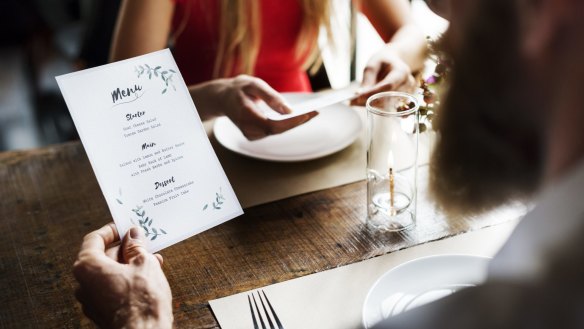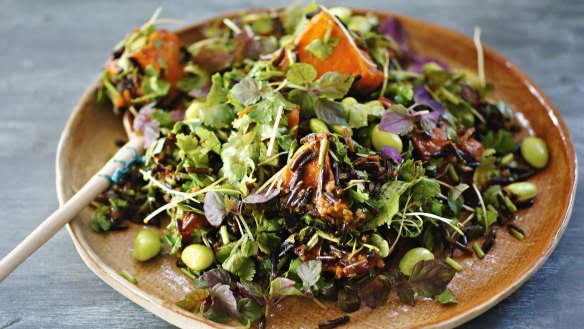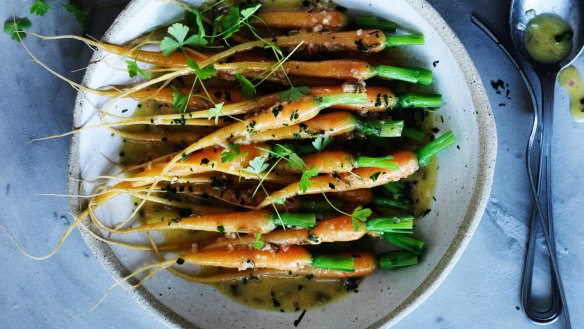The secret psychology of restaurant menus

I'm meeting my friend for dinner at a local Italian. I'm going to have the house salad. It's what I always have when we go there and I know it will be both delicious and satisfying. But when I arrive everything is different – the restaurant has had a facelift – and so has the menu.
I find myself salivating as I read sensuous descriptions of pizza toppings and pasta dishes that I usually steer well clear of. Suddenly I desperately want pizza for dinner and all my intentions of eating light are out the window. My old faithful house salad doesn't get a look in.
On the face of it, a menu is just a list of the food and drinks available. But how much influence does it have on what we order? According to dietitian Lulu Cook, quite a lot. "The research is clear - simple changes, such as descriptions of menu items and position on the menu are powerful in changing ordering behaviours," she tells me.

It makes sense – using descriptive language that appeals to the senses is bound to be more appealing than standard dish names. As Cook notes, 'hearty rustic bread bowl' is bound to sell better than the same item, simply named 'bread bowl'. "By providing a more descriptive title, diners are able to more fully imagine how enjoyable the dish will be," she explains.

This applies as much to vegetables as it does to desserts, in fact a recent study from Stanford University found that labelling carrots 'twisted citrus-glazed carrots' and green beans as 'sweet sizzlin' green beans and crispy shallots' increased vegie sales by 25 per cent despite no change in the actual preparation of the dishes.
So what about the order of the menu? Cook, who has studied the research of food psychologist Brian Wansink, notes that the position of an item on a menu changes the frequency with which it is ordered. "Researchers have done tests tracking the pattern by which a reader's eyes move across menu pages of various shapes and sizes, and identified the sections most heavily ordered from, no matter what menu item is listed there," she explains.
This means that listing an item first in a list will increase ordering frequency. For instance, cook tells me that if a café wanted to promote its house-made vegetarian burger, it would move that to the top of the list of burger options, and give it an appealing, descriptive name. "Boom! Now they just have to hope they have enough burgers made, because it's going to sell much better than it did last week, when it languished at the bottom of the list of options," she says.
Menu psychology is so powerful that many restaurants invest time analysing orders so that they can boost the sales of profitable dishes. This is a process that entrepreneur Greg Rapp calls menu engineering. "Menu Engineering is the study of the profitability and popularity of items and the study of the guests and their ordering habits," says Rapp.
Rapp explains that the goal of a restaurant operator is to keep their customers coming back. "The minute the guest walks in the door, we should be giving them an experience that will bring them back! When a guest finds three items they want to order, they will be back two more times. By understanding the engineering on a menu, the operator better understands what role each item plays on the menu."
Among Rapps arsenal of menu engineering tools are tweaks to font, typeface and even paper. "Paper sets the mood of the menu. Linen finish gives an upscale mood where a felt finish is more relaxed. A Club Cover sets the tone of a more upscale menu where a Cafe Cover gives an informal format," he says.
Of course, it's not just the menu that influences what we choose to eat. Dietitian Lulu Cook notes that our gut microbes can influence food cravings and time of day will play a huge role in appetite. Other factors such as the occasion, who you are with and even the weather can also play a role.
If you want to avoid the tricks of menu psychology, Cook suggests making a decision before you arrive at the restaurant. "Making a selection ahead of time, before the hunger pangs hit, almost always leads to a healthier choice," she says.
"Looking at a menu online before arriving, and deciding then what you will order once you get to the restaurant, provides insurance against making over-indulgent choices, or over-ordering in general, when you arrive, famished, after work."
Restaurant reviews, news and the hottest openings served to your inbox.
Sign up